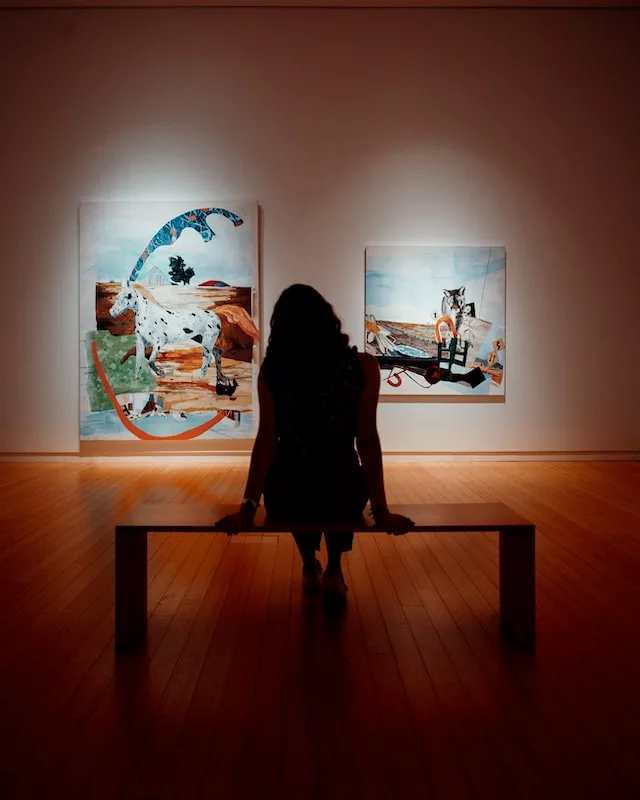When I decided to open my art gallery, I had no idea what kind of challenges and obstacles awaited me. It was a nerve-racking decision that came with countless questions and doubts – was this the right decision? What didn’t I know about starting an art gallery? Wouldn’t it be easier if someone told me all the key things they wish they knew before taking this big step? Today, I want to share 9 key insights that would have been incredibly useful to me shortly after deciding to pursue my ambitious dream of opening an art gallery. Whether you are interested in starting your own business or considering taking a risk on something new and exciting, these tips will ensure you feel confident in your decisions!
Research the Local Art Scene
Researching the local art scene before embarking on opening a new art gallery is essential for understanding who your prospective customers are, what styles and genres of artwork are in demand, and how to differentiate yourself from any competing galleries. A thorough look into the area’s existing galleries can prove invaluable in setting up a successful business. Explore what art movements your local community is responding to; analyze media coverage; and keep abreast of changing trends within the industry – be proactive and stay ahead of the competition! While you do this preparation work, start engaging with potential clients via events and brand-building opportunities both offline and online. Such research will ultimately help you create a tailored mission statement that resonates with visitors and keeps them returning again and again.
Start Small
When embarking on a new venture such as launching an art gallery, it is important to set realistic expectations and goals from the beginning. Starting with small goals allows you to gain experience as you build your gallery in a sustainable way. This process helps you understand what works for you and your gallery, with each successful step creating more confidence and motivation to have bigger ambitions. Having small but attainable goals keeps you from becoming overwhelmed or discouraged, allowing progress over time that will lead to your ultimate goal of owning a successful art gallery.
Secure Financial Support
Securing the financial support that your art gallery needs is a non-negotiable step in the process of opening it. It is important to have the necessary capital to cover all of the costs of opening and running a business, from renting out a space or building to buying or creating signage, hiring staff, and any other expenses that may arise.
Without enough funds behind your venture you will simply not be able to bring it to fruition. This initial investment can be secured through traditional means like loans or by more creative strategies such as crowdfunding or collaborative investments with friends and family. It’s crucial that you plan out how much money you need and where you’ll obtain it before jumping into the creative elements of starting your art gallery.

Build Trust & Relationships
When launching an art gallery, building trust and relationships with collectors, artists, and other galleries is of the utmost importance. Establishing these types of relationships can open up a variety of doors for creating beneficial partnerships and increase the visibility of your gallery.
Additionally, creating meaningful connections will help you to curate compelling artwork that appeals to a variety of demographics. Stay active in industry events and be sure to form authentic partnerships with other galleries and local organizations alike! Doing so can help create invaluable opportunities for expanding your reach into new geographic markets.
Keep Learning & Evolving
Staying on top of trends in the art world is an important part of running a successful gallery. As tastes and styles change over time, it’s essential to research what buyers are looking for in order to cater to their needs and stay ahead of the competition. Whenever possible, attend trade shows, seminars, and workshops that allow you to not only observe the latest trends but also network with other gallery owners, collectors, and artists.
Additionally, participate in online forums where experts can answer questions and share advice on current topics relevant to art galleries. By utilizing these sources of education and learning more about your industry every day, your art gallery will have an edge when it comes to staying up-to-date with ever-evolving trends.
Hire the Right Team
When starting an art gallery, it is important to hire the right team. Not only is the team you select responsible for or implementing your vision and executing day-to-day operations, but also for creating a culture of collaboration that allows creativity and innovation to thrive. To ensure success, take time to define each role within the gallery, build a job description for each position and draw up hiring criteria for evaluating potential candidates. Consider factors ranging from candidate’s technical expertise to their ability to work well with others. Once hired, get the team off on the right foot by investing in professional development and training opportunities so they understand both their goals and your expectations as a leader.
Maintain Professionalism
When beginning an art gallery business, it is essential to maintain a professional demeanor in all aspects of operations. How you communicate with customers and industry professionals can be a determining factor in how successful the gallery is. When discussing pieces of artwork or engaging with visitors, it is best to use clear and approachable language that conveys confidence and respect.
It is also important to ensure that your team reflects the same professionalism that you are hoping to embody; by providing training and guidance, you can help ensure your employees interact with customers and other art industry members similarly. Ultimately, professional etiquette will go a long way in building trust and success for your art gallery.
Know When to Take Risks
When starting an art gallery, it is important to take calculated risks in order to open up new opportunities for growth. For example, you may decide to collaborate with other galleries or organizations, or decide on a creative new approach to the way your gallery presents artwork. It can be beneficial to think outside the box and come up with innovative ways of making your art gallery stand out from the competition.
Taking careful risks can also mean selecting a particular type of artist or artwork that hasn’t been seen in galleries before; this could expand audiences and significantly increase your business’ success. While there are some potential risks in risking anything, taking calculated ones could bring huge benefits for an art gallery’s reputation, efficiency and appraisal within the industry.
Stay Consistent & Dedicated
Establishing and sustaining a successful art gallery requires dedication and consistency. When launching such a venture, any new business owner must keep their goals in sight at all times and stick to them in order to reach the desired levels of success. This means having the discipline to stick to certain routines, marketing strategies and policies that can drive the art gallery’s presence among its target market, no matter what circumstances present themselves along the way. Doing this will help ensure steady growth over time as well as establish public trust with customers and long-term sustainability of the gallery itself.
Starting an art gallery is no easy task, but it can be an incredibly rewarding and satisfying experience. Knowing the right information beforehand can help ensure that you are well prepared for the journey ahead. With these nine pieces of advice, you’ll have a head start on understanding what it takes to open a successful art gallery and make your dreams come true.

